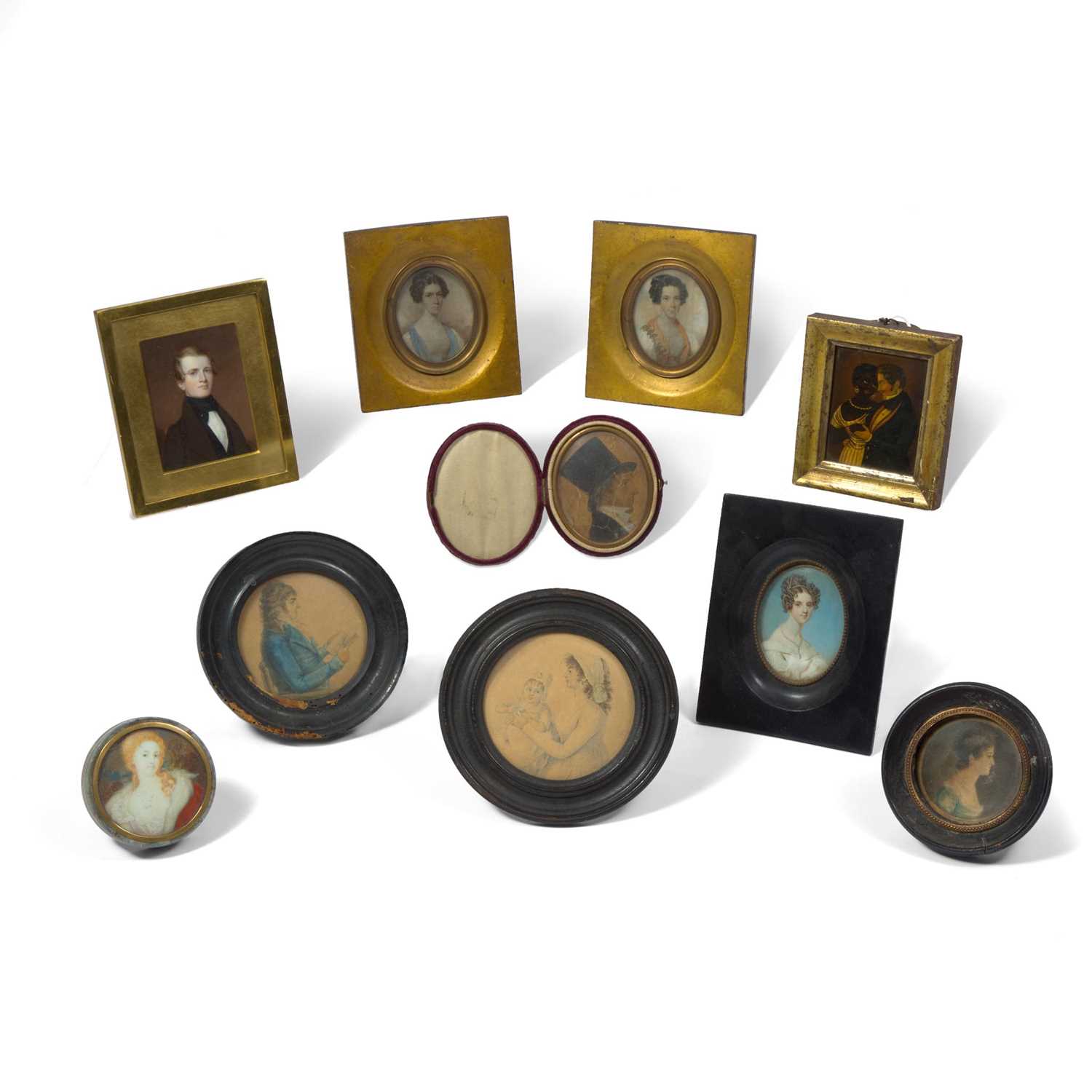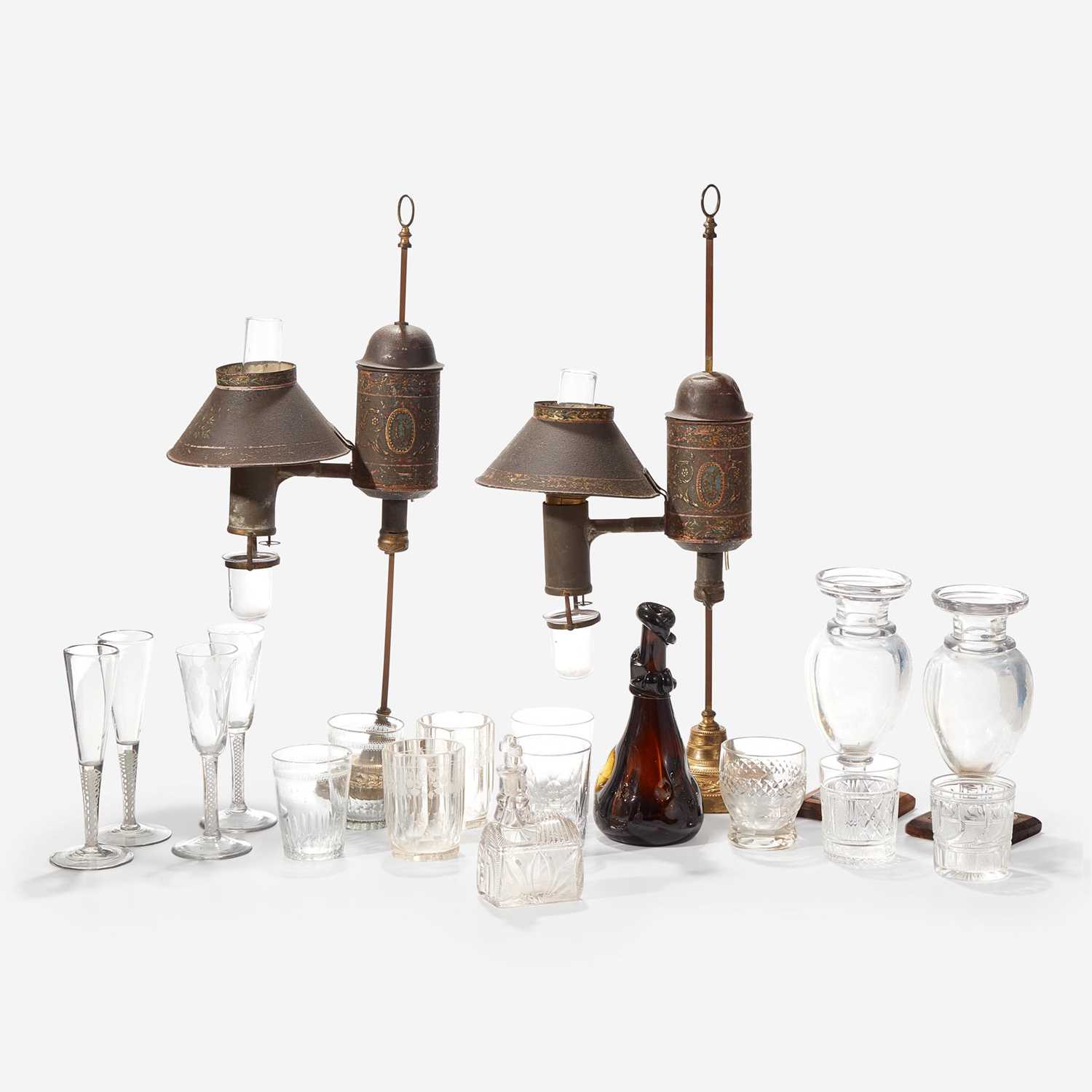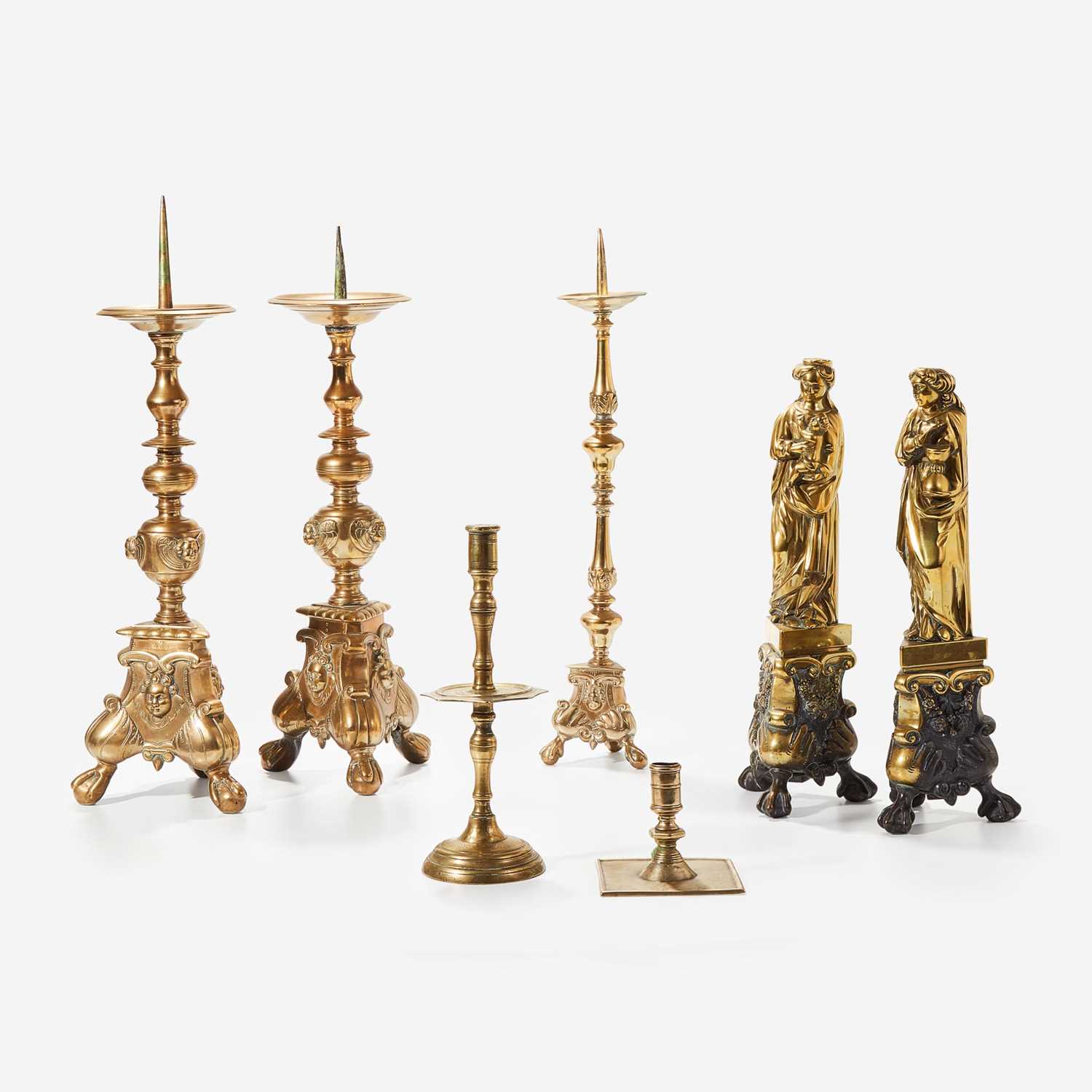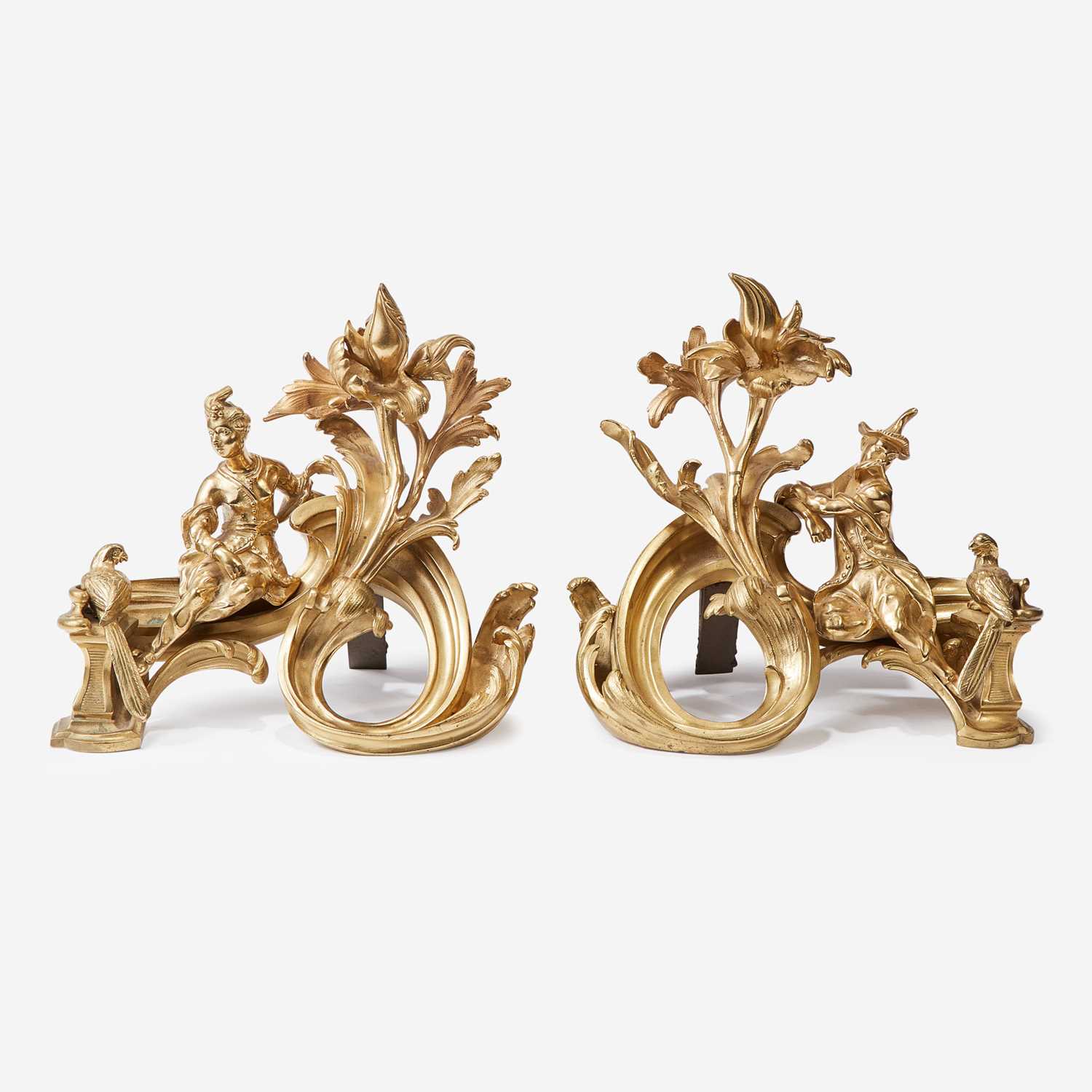Philadelphia Interest: Pair of American Silver Two-Handled Vases of Historic Importance Thomas Fletcher and Sidney Gardiner Philadelphia, 1832 Each of urn-form, the bodies engraved with bands of vertical leaves, the handles formed as dolphins with entwined tails, on a foliate pedestal foot. The inner rim of each engraved with presentation inscription "Thomas Biddle to His Brother James August 26, 1831." Heights 8 1/4 inches, total approximately 43 ounces. Thomas Biddle (1790- 1831) was one of ten children born to prominent Philadelphian Charles Biddle and his wife Hannah. Thomas accomplished quite a bit in his relatively short life - heroism in the war of 1812 where he was wounded twice, and professional success as army paymaster during American expansion west, appointed to that post in St Louis in 1820. Thomas married Ann Mullanphy, daughter of Missouri's first millionaire in St. Louis in 1823, and eventually became the director of the St. Louis branch of the Bank of the United States, and began to wade into political waters. It is the infamous result of his public dealings for which Thomas Biddle is now most consequently known. In 1831, Missouri Congressman Spencer Darwin Pettis criticized the policies championed by Thomas's older brother Nicholas, President of the Second Bank of the United States. The attack became scathingly personal and boiled over into the infamous skirmish. In July, Thomas physically attacked Pettis with a cowhide whip while the latter lay in bed recovering from a sickness at a St. Louis hotel. After a few weeks of recuperation following the assault, Pettis challenged Biddle to a duel, which Biddle accepted. As the challenged party, Thomas chose the weapons (pistols) and the distance (an unusually close five feet) for the event. Biddle was nearsighted and some contemporaries looked to that as justification for the short distance. At this distance the parties would be so close that their pistols may actually have overlapped. Others saw it as a sure way for both men to die, and therefore as a kind of bluff by Biddle, giving cover to Pettis to call off the confrontation while still maintaining honor. In the end Pettis called the bluff, if that's what it was, and the place was set for the duel - a sandbar in the middle of the Mississippi River appropriately named Bloody Island. It was scheduled for 5:00pm on August 26, 1831. With money, a storied Philadelphia pedigree, a taste for the finer things, and the end of his life almost certainly the outcome of the duel, Biddle sought to memorialize himself for his family. By way of his will drawn up just the night before the duel, he instructed his wife to approach the prominent Philadelphia silversmiths Thomas Fletcher and Sidney Gardiner to make ten memorial vases to be given to Thomas Biddle's siblings and to his wife's siblings. Fletcher and Gardiner were one of America's most prominent silversmiths in the early Republic period, specializing in work of "unprecedented quality and grandeur." They solidified their fame soon after their 1811 move from Boston to Philadelphia by designing and creating naval trophies to commemorate battles won by Isaac Hull and William Bainbridge commanders of the USS Constitution during the war of 1812. Their presentation silver work, for which there was no precedent in America's history of silversmithing, incorporated bold and patriotic themes, often on a grand scale, coupled with unimpeachable workmanship. The cost was a substantial $60 for each vase - more than the average yearly salary for Americans. The pair of calyx krater-form vases presently offered, directly descended in the family for almost 200 years from the Christine Biddle Wainwright collection, are each inscribed to Thomas's brother, James, himself a naval veteran of the War of 1812, and are dated August 26, 1831 (the day of the fateful duel). Each features flaring anthemion-decorated rims, stylized acanthus ornamentation to the bodies and bases, and handl
Each generally good condition overall; the vases vary slightly in size with the handle placement differing; slight denting to rims; each clearly marked up inside foot; inscriptions good and legible; one urn slightly heavier than the other
Philadelphia Interest: Pair of American Silver Two-Handled Vases of Historic Importance Thomas Fletcher and Sidney Gardiner Philadelphia, 1832 Each of urn-form, the bodies engraved with bands of vertical leaves, the handles formed as dolphins with entwined tails, on a foliate pedestal foot. The inner rim of each engraved with presentation inscription "Thomas Biddle to His Brother James August 26, 1831." Heights 8 1/4 inches, total approximately 43 ounces. Thomas Biddle (1790- 1831) was one of ten children born to prominent Philadelphian Charles Biddle and his wife Hannah. Thomas accomplished quite a bit in his relatively short life - heroism in the war of 1812 where he was wounded twice, and professional success as army paymaster during American expansion west, appointed to that post in St Louis in 1820. Thomas married Ann Mullanphy, daughter of Missouri's first millionaire in St. Louis in 1823, and eventually became the director of the St. Louis branch of the Bank of the United States, and began to wade into political waters. It is the infamous result of his public dealings for which Thomas Biddle is now most consequently known. In 1831, Missouri Congressman Spencer Darwin Pettis criticized the policies championed by Thomas's older brother Nicholas, President of the Second Bank of the United States. The attack became scathingly personal and boiled over into the infamous skirmish. In July, Thomas physically attacked Pettis with a cowhide whip while the latter lay in bed recovering from a sickness at a St. Louis hotel. After a few weeks of recuperation following the assault, Pettis challenged Biddle to a duel, which Biddle accepted. As the challenged party, Thomas chose the weapons (pistols) and the distance (an unusually close five feet) for the event. Biddle was nearsighted and some contemporaries looked to that as justification for the short distance. At this distance the parties would be so close that their pistols may actually have overlapped. Others saw it as a sure way for both men to die, and therefore as a kind of bluff by Biddle, giving cover to Pettis to call off the confrontation while still maintaining honor. In the end Pettis called the bluff, if that's what it was, and the place was set for the duel - a sandbar in the middle of the Mississippi River appropriately named Bloody Island. It was scheduled for 5:00pm on August 26, 1831. With money, a storied Philadelphia pedigree, a taste for the finer things, and the end of his life almost certainly the outcome of the duel, Biddle sought to memorialize himself for his family. By way of his will drawn up just the night before the duel, he instructed his wife to approach the prominent Philadelphia silversmiths Thomas Fletcher and Sidney Gardiner to make ten memorial vases to be given to Thomas Biddle's siblings and to his wife's siblings. Fletcher and Gardiner were one of America's most prominent silversmiths in the early Republic period, specializing in work of "unprecedented quality and grandeur." They solidified their fame soon after their 1811 move from Boston to Philadelphia by designing and creating naval trophies to commemorate battles won by Isaac Hull and William Bainbridge commanders of the USS Constitution during the war of 1812. Their presentation silver work, for which there was no precedent in America's history of silversmithing, incorporated bold and patriotic themes, often on a grand scale, coupled with unimpeachable workmanship. The cost was a substantial $60 for each vase - more than the average yearly salary for Americans. The pair of calyx krater-form vases presently offered, directly descended in the family for almost 200 years from the Christine Biddle Wainwright collection, are each inscribed to Thomas's brother, James, himself a naval veteran of the War of 1812, and are dated August 26, 1831 (the day of the fateful duel). Each features flaring anthemion-decorated rims, stylized acanthus ornamentation to the bodies and bases, and handl
Each generally good condition overall; the vases vary slightly in size with the handle placement differing; slight denting to rims; each clearly marked up inside foot; inscriptions good and legible; one urn slightly heavier than the other















Testen Sie LotSearch und seine Premium-Features 7 Tage - ohne Kosten!
Lassen Sie sich automatisch über neue Objekte in kommenden Auktionen benachrichtigen.
Suchauftrag anlegen